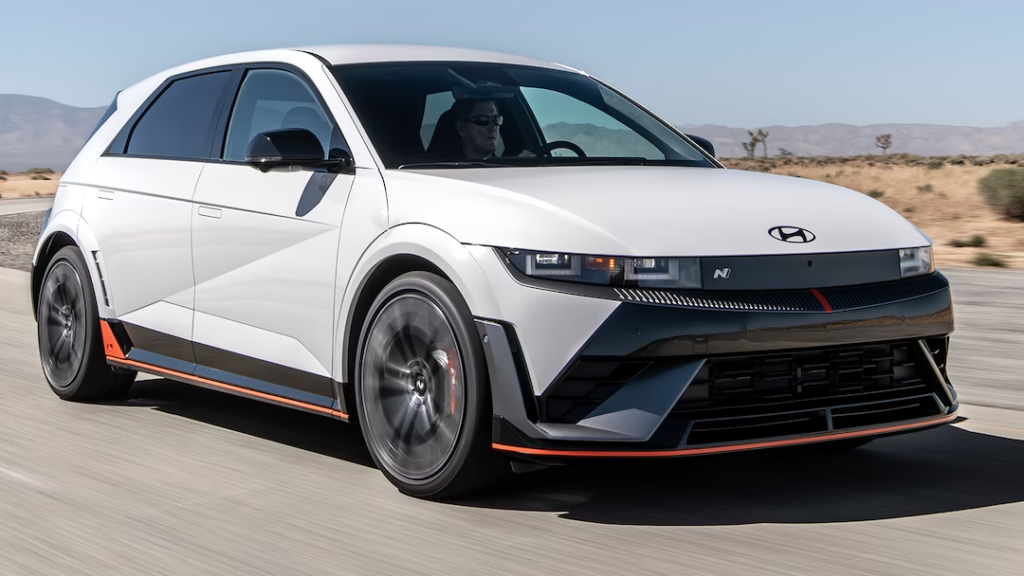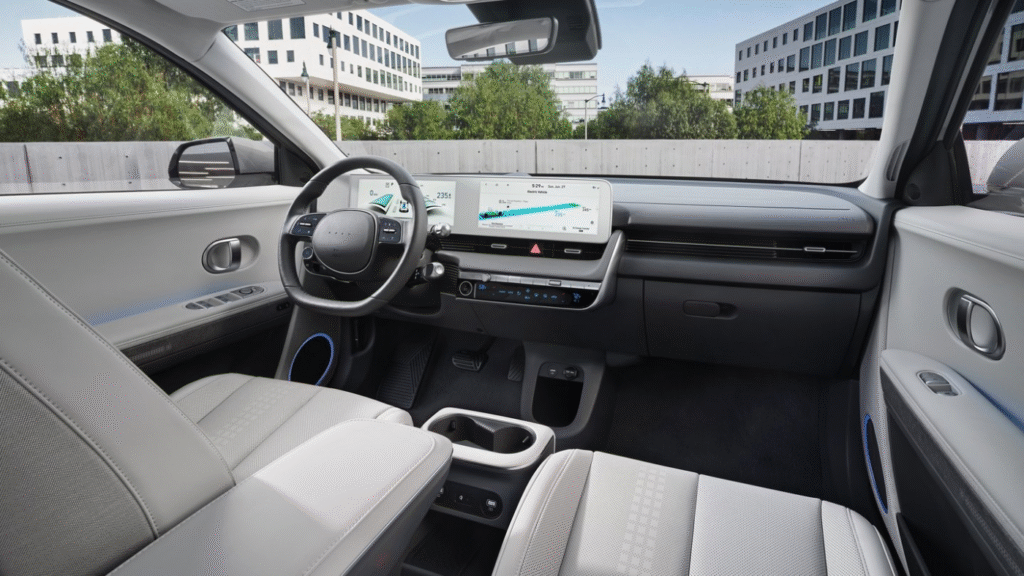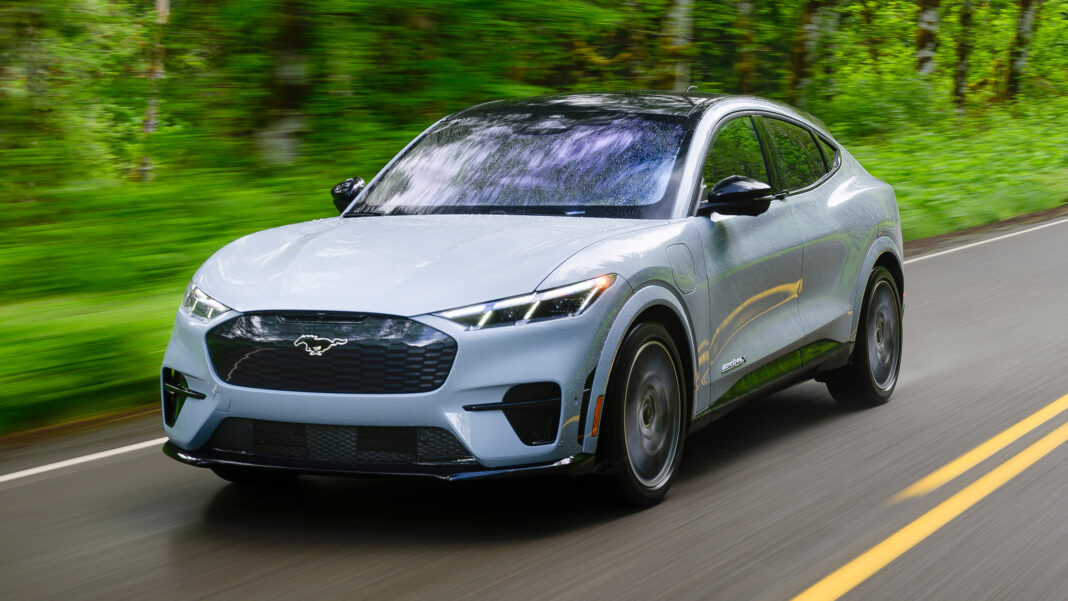The electric vehicle (EV) market has evolved rapidly, with automakers introducing innovative models to meet the growing demand for sustainable transportation. Among the front-runners in this transformation are the Ford Mustang Mach-E and the Hyundai Ioniq 5. Both vehicles have garnered attention for their performance, design, and technological advancements, making them top contenders for consumers considering an EV purchase in 2025.
The Ford Mustang Mach-E was introduced in late 2020 as Ford’s first all-electric SUV. Drawing inspiration from the iconic Mustang sports car, the Mach-E aimed to combine performance with practicality, offering a fully electric alternative in a segment traditionally dominated by internal combustion engines. Its debut marked a significant step for Ford in embracing the electric future.
The Hyundai Ioniq 5 made its global debut in 2021 as part of Hyundai’s new Ioniq sub-brand dedicated to electric vehicles. Built on the Electric-Global Modular Platform (E-GMP), the Ioniq 5 showcased Hyundai’s commitment to innovation, featuring a distinctive design and advanced technology. Its introduction signaled Hyundai’s serious entry into the competitive EV market.

Performance and Driving Experience
When it comes to performance, both the Ford Mustang Mach-E and the Hyundai Ioniq 5 offer impressive capabilities. The Mach-E is available in various configurations, including rear-wheel drive (RWD) and all-wheel drive (AWD), with power outputs ranging from 266 horsepower to 480 horsepower in the GT Performance model. This range allows consumers to choose between efficiency and exhilarating acceleration, with the GT Performance model capable of reaching 0 to 60 mph in just 3.6 seconds .
The Hyundai Ioniq 5, while offering a more modest range of 168 to 320 horsepower depending on the variant, surprises with its performance. The dual-motor AWD model can accelerate from 0 to 60 mph in approximately 4.4 seconds . This performance, combined with its smooth ride and agile handling, makes the Ioniq 5 a compelling choice for those seeking a balance between performance and comfort.
Range and Charging Capabilities
Range remains a significant concern for potential EV buyers. The Ford Mustang Mach-E addresses this with its extended-range battery options, offering up to 310 miles on a single charge in the RWD configuration. The Mach-E also supports fast charging, providing up to 80% charge in about 45 minutes using a Level 3 DC fast charger.
The Hyundai Ioniq 5 also offers competitive range figures, with the Long Range RWD model capable of over 310 miles on a full charge . Its 800V architecture allows for ultra-fast charging, enabling the vehicle to charge from 10% to 80% in just 18 minutes using a Level 3 DC fast charger .
Interior Comfort and Technology
Inside, both vehicles offer modern, tech-forward cabins designed with comfort in mind. The Ford Mustang Mach-E features a spacious interior with a 15.5-inch vertical touchscreen running Ford’s SYNC 4A infotainment system. The system supports wireless Apple CarPlay and Android Auto, and the vehicle offers available features like BlueCruise hands-free driving assistance .
The Hyundai Ioniq 5 boasts a minimalist interior with a flat floor, providing ample legroom. Its dual 12.0-inch screens serve as the central hub for infotainment and driver information. The Ioniq 5 also emphasizes sustainability, using eco-friendly materials throughout the cabin .
Pricing and Value Proposition
Pricing plays a crucial role in the decision-making process for many consumers. The Ford Mustang Mach-E starts at an MSRP of $41,990, while the Hyundai Ioniq 5 begins at $44,075 . While the Mach-E is slightly more affordable, the Ioniq 5 offers a compelling value proposition with its rapid charging capabilities and unique design.
Both vehicles are eligible for federal EV tax credits, which can further reduce the effective purchase price. It’s important for potential buyers to check the current availability of these incentives, as they can vary based on location and eligibility criteria.

Choosing between the Ford Mustang Mach-E and the Hyundai Ioniq 5 ultimately depends on individual preferences and priorities. The Mach-E appeals to those seeking a blend of performance and practicality, with its powerful engine options and spacious interior. The Ioniq 5, with its rapid charging capabilities and innovative design, caters to consumers looking for cutting-edge technology and efficiency.
Both vehicles represent significant strides in the electric vehicle market, offering compelling options for those looking to transition to a more sustainable mode of transportation. Test-driving both models and considering factors like driving range, charging infrastructure, and interior comfort can help consumers make an informed decision that best suits their needs.





